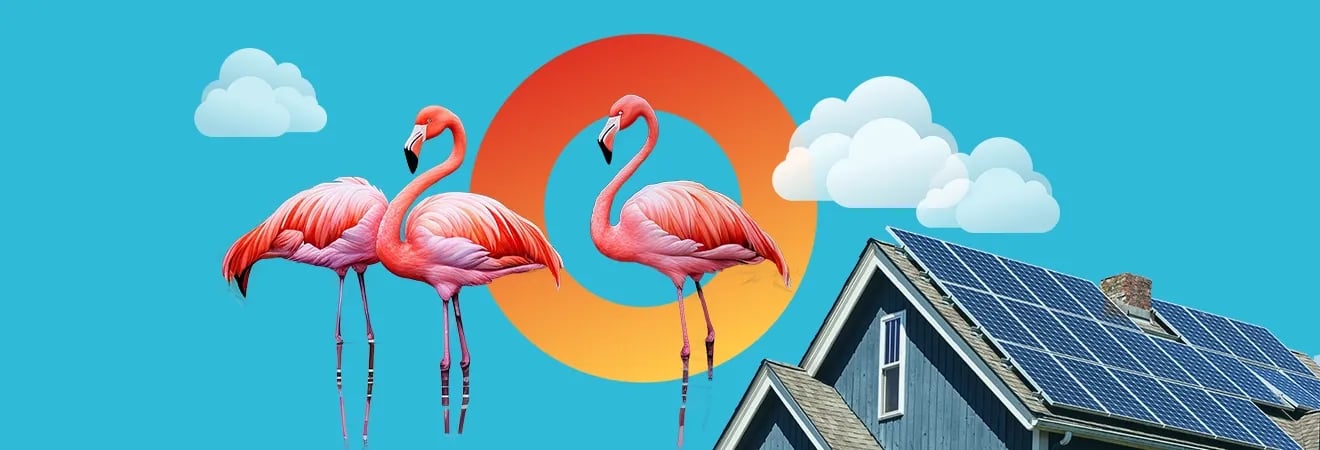Maximizing Solar Power: Importance of Optimum Angle for Solar Panels
Riddhi Kumar • 2024-08-02 • 4min read
Solar power is considered one of the most promising renewable energy sources in the world. Its growing popularity can be attributed to its benefits such as reducing carbon emissions, providing a stable and reliable source of energy, and lowering electricity costs. However, for solar panels to work at their optimum level, it is crucial to find the right angle for their installation. In this article, we will discuss the importance of finding the optimum angle for solar panels and how it can maximize solar power generation.

Solar power is considered one of the most promising renewable energy sources in the world. Its growing popularity can be attributed to its benefits such as reducing carbon emissions, providing a stable and reliable source of energy, and lowering electricity costs.
However, for solar panels to work at their optimum level, it is crucial to find the right angle for their installation. In this article, we will discuss the importance of finding the optimum angle for solar panels and how it can maximize solar power generation.
Understanding the Optimum Angle for Solar Panels
The optimum angle, also known as the tilt angle, is the angle at which solar panels should be installed to receive maximum sunlight throughout the day. While the optimal angle for solar panels in the US is usually between 30-40 degrees, it may vary depending on the location.
The best angle for a solar panel system is determined by considering various factors discussed below.
Factors Affecting the Optimum Angle
Geographical Location
The latitude of a place plays a crucial role in determining the ideal solar panel tilt angle. For example, areas closer to the equator (low latitudes) receive more direct sunlight throughout the year and require smaller tilt angles compared to areas near the poles (high latitudes).
Time of Year
The position of the sun in the sky changes throughout the year, affecting the angle at which sunlight hits the solar system. Hence, it is essential to adjust the tilt angle according to different seasons.
Weather Conditions
Cloud cover and haze can affect the amount of sunlight reaching solar panels, making it necessary to consider these factors when determining the optimum angle.
Importance of Finding the Optimal Tilt Angle
Maximizes Energy Production
Installing solar panels at an optimum angle ensures that they receive maximum sunlight for most parts of the day. This results in higher energy production and a more efficient use of resources.
Increases Panel Lifespan
When installed at an incorrect angle, solar panels may experience excessive wear and tear due to wind and weather conditions. Finding the optimum angle can prolong the lifespan of solar panels, reducing maintenance costs in the long run.
Improves Return on Investment
Solar panels are a significant investment, and finding the optimum angle can help maximize their returns by increasing energy production and reducing maintenance costs.
How to Find the Optimum Solar Panel Angle?
Finding the optimum angle for solar panels can be done through different methods such as-
Online Solar Panel Angle Calculators
Many online tools use geographical data, weather patterns, and solar radiation levels to determine the best tilt angle and solar panel direction for a specific location. While the accuracy may vary, these calculators provide a good starting point for determining the optimum angle.
Consulting a Professional
For more precise calculations, it is advisable to consult a professional solar panel installer. They have the expertise and equipment to analyze various factors and determine the ideal angle for maximum energy production.
Manual Calculation
The optimum angle can also be calculated manually using mathematical equations that take into account geographical location, season, and weather conditions. This method may require a bit more effort, but it provides a personalized result.

Technical Innovations for Achieving Optimal Solar Panel Angle
Here are some recent technological innovations that aim to maximize solar power generation through optimal solar panel angle-
Solar Tracking Systems
A solar tracking system is a device that adjusts the tilt and orientation of solar panels according to the movement of the sun, ensuring maximum sunlight exposure throughout the day.
Smart Inverter Technology
Smart inverters can track the production and efficiency of each individual solar panel in real-time. This data is then used to adjust the tilt angle for maximum energy production.
Bifacial Solar Panels
Bifacial solar panels can absorb sunlight from both sides, increasing energy production and reducing the need for precise tilt angles.
Software and Simulation Tools
Advancements in software and simulation tools have made it easier to calculate the optimum angle for solar panels accurately. These tools take into account various factors such as location, weather patterns, and panel orientation to provide a detailed analysis.
Conclusion
In conclusion, finding the optimum angle for solar panels is crucial for maximizing energy production and getting the most out of your investment.
With advancements in technology and various methods available, it has become easier than ever to determine the ideal tilt angle for solar panels at any location. So whether you are considering installing solar panels at your home or business, make sure to find the optimum angle to reap all its benefits.